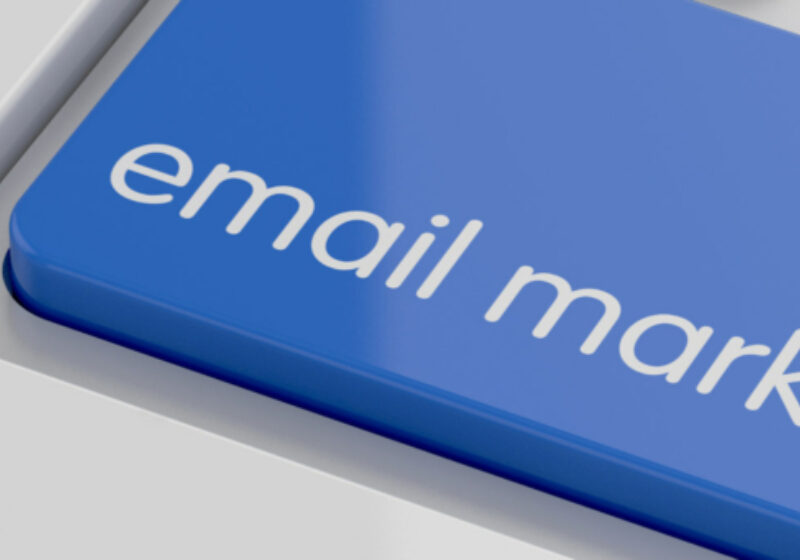
By David Battson 4 min read

The majority of emails that businesses send, whether it’s to a B2B or B2C audience, are HTML formatted. They are usually highly visual, creative and well styled. They allow for greater branding capabilities, as well as responsive design and granular tracking.
However, within most marketing automation platforms, you can create HTML emails that land in inboxes looking like plain text emails but giving you all the same tracking functionality of HTML. Whilst stylised HTML is the most popular choice for email communication—and for lots of good reasons—there can be benefits to plain text-style emails. You should consider the type of message you’re presenting, and the needs and goals of your audience.
Overall, the benefit of a plain text-style email is its simplicity.
It conveys a more personal approach and is less likely to end up in your recipients’ spam folders, but there are known drawbacks too. Here are the main advantages and disadvantages of plain text emails, and some overall recommendations for your email broadcast.
Three advantages of plain text emails
1. Better chance of delivery
Although email marketing has fundamentally changed, sales emails were once packed full of images. Today, emails with plain text or more basic HTML are still less likely to be identified as spam by email clients.
Interestingly, whilst people often report a better viewing experience with HTML emails, they don’t always perform better. In fact, there’s some research that suggests plain text has a higher click-through-rate. Some users may also see HTML emails as a security and privacy risk, and will choose not to load any images from your HTML broadcast.
2. They sound more natural
Despite how communication has changed, email is still considered a one-on-one conversation. Plain text, therefore, gives a personal touch to your message. If you’re sending your email broadcast as an individual with a personal sign off, and would like to achieve a more natural feel, plain text may be the better choice.
3. Plain text is compatible with wearables
With a growing number of people using wearable devices, smart watches and fitness trackers that display messages, it’s worth considering that your audience may only receive a text version of your email. Plain text emails, therefore, are a better format for these recipients.
Three disadvantages of plain text emails
1. Minimal branding and customisation
With a plain text email, your ability to set your content apart and highlight your brand’s visual identity is minimal. To trigger visual recognition, it is advised that you keep some element of branding within your communication. This could be a simple logo in your signature, or an image within the text.
2. Some plain text is considered spam
There’s still an issue that many spam emails are sent in plain text, such as those selling top page ranking on Google and backlinks. If your email is not appropriately personalised with a proper signature and the format is not appropriate for your campaign or nurture, your email could get ignored.
3. Harder to highlight CTAs
With plain text, there’s limited scope to highlight certain content sections, draw your readers eye to specific elements, or provide a visual cues. With HTML, you can style buttons and bring focus to your email’s main call to action. Plain text, meanwhile, relies on the quality of your copy.
Three things to consider when you’re email broadcasting
1. The choice depends on your audience
The correct format for your email send often depends on the nature of your business. Ecommerce organisations, for example, that rely on highly aesthetic content often choose to send highly styled HTML to showcase their products and brand.
Emails intended for more technical audiences, meanwhile, may benefit from a much more personalised approach with limited styling and formatting. Some audiences are actively put off by obvious HTML, deeming them too salesy, whereas the appearance of plain text can add a personal touch.
2. It’s always good to use your logo or a supporting image
Even when sending a plain text-style email, it’s worth including a logo or supporting image for visual recognition.
Regardless of whether you’re sending an HTML or a plain text-style email, your CTAs should always stand apart from your body text. It’s sensible to use text links by hyperlinking sections of text, rather than using full links and keep your text clean and simple.
3. A plain text email should support your HTML blast
Whilst there is research to support the use of plain texts emails, it doesn't mean that every email marketer should move away full HTML. What’s more, the best practice is to always send a plain text email to support your HTML for enhanced results and deliverability.
All good email marketing platforms will give the fallback option of sending a fully plain text email for servers that block HTML. Unlike plain text-style emails in HTML, however, these emails are entirely formatless—the font cannot be changed and full links must be used, without opens tracked. There are almost no styling options on these emails whatsoever, but it helps improve deliverability if your HTML email gets flagged as spam.
Consider A/B testing
After all these considerations, if you’re still undecided on which format works best for your audience, you should consider running A/B tests across both formats. Split testing is the best way to track assess your results and know for sure what works best for your mailing list.
If you’d like additional support with your email broadcasting, companies that supply third party email data—like us at Data HQ— will often work hard to understand your specific campaign goals. From there, we help businesses with their email design and split testing, as well as ensuring you always have the highest quality data when purchasing a mailing list.
Further reading: Data HQ's complete guide to email marketing
Related blogs and ideas
Explore more ideas
Let us open your mind to new possibilities
Our stories and ideas direct to your inbox


